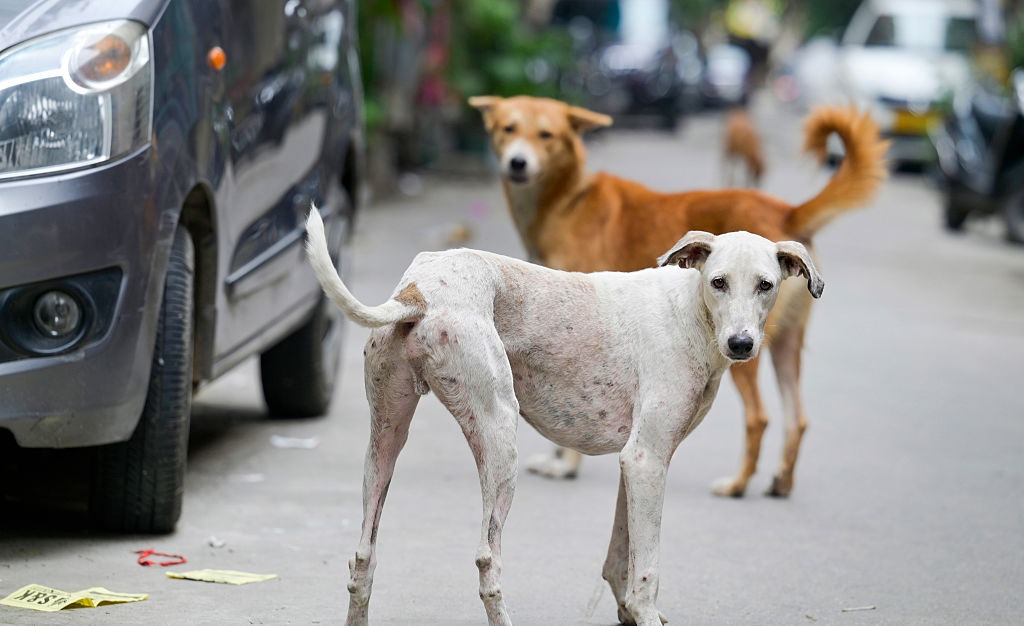Delhi‑NCR में Stray dogs को तुरंत Shelter homes में Shift करने वाली पहले की Direction पर अब Supreme Court ने रुख नरम किया है। नवीनतम निर्देशों के मुताबिक, Strays को Sterilisation और Immunisation के बाद उनकी Original Localities में ही वापस Release किया जाएगा। Court ने साथ ही साफ कहा कि सार्वजनिक सुरक्षा सर्वोपरि है—खासकर छोटे बच्चों और Seniors को Rabies व Dog bites से सुरक्षित रखना प्रशासन की प्राथमिक ज़िम्मेदारी रहेगी। संक्षेप में—Humane ABC (Animal Birth Control) model जारी रहेगा, मगर Implementation तेज़ और Accountable होना चाहिएकुछ महीने पहले हमारे सोसायटी पार्क में Feeding spots और Kids’ play area को लेकर काफी friction हुआ था। जब हमने RWA के साथ मिलकर Fixed feeding points चिन्हित कर दिए, Ear‑notched, Vaccinated dogs की पहचान साफ हो गई और Complaints कम हुईं।

क्या बदला है: Key takeaways
- पहले की Blanket directive (Delhi‑NCR के सभी Strays को Shelter homes में Shift करना) को Modify किया गया
- अब Dogs को Sterilisation + Immunisation के बाद उनकी Original Localities में Release किया जाएगा
- जो Dogs Rabid पाए जाते हैं, वे Release के अपवाद होंगे—उन्हें Law‑compliant तरीके से Isolate/Manage करना होगा
- Court ने Authorities को Public सुरक्षा मजबूत करने, और Residents को Fear‑free movement सुनिश्चित कराने पर जोर दिया
- Activists/Feeders और Officials के बीच टकराव पर Court का स्पष्ट संकेत: Lawful Duty में बाधा डालना उचित नहीं; Humane Implementation के साथ‑साथ Obstruction पर कार्रवाई भी संभव है
Dog lovers और Feeders के लिए क्या मायने रखता है
- Local body की ABC (Sterilisation + Anti‑rabies vaccination) drives में पूरा सहयोग दें—Dogs को पकड़ने, Tagging/Ear‑notching और बाद में Safe release में बाधा न बनें
- Feeding केवल Designated spots पर करें; Kids’ play areas, Hospital gates, School entrances जैसे Sensitive zones से बचें
- जिन Dogs को आप Feed करते हैं, उनका Vaccination record, Ear‑notch और Photo/Tag maintain करना बेहतर है—Disputes में यह मदद करता है
- Injury या Aggressive behaviour दिखे तो तुरंत Municipal helpline/App या Local NGO को Incident report करें—Self‑harm या Mob action से बचें
- Street ethics अपनाएं: Clean feeding, Water bowls की नियमित सफाई, और Littering न करें—Neighbours से Trust बनता है
Residents और RWAs के लिए Practical guide
- Feeding map बनाएं—Security और Cleanliness ध्यान में रखते हुए Fixed points तय करें
- Monitoring committee (RWA + Feeder representatives + Local vet/NGO) से Monthly review लें—ABC progress, Complaints, Bite cases
- Stray‑related issues के लिए Single‑window escalation रखें—Municipal control room, App ticket number और Photographic evidence maintain करें
- Children‑safety steps: School bus stops और Play area के पास Zero‑feeding zone, Night‑time lighting, Guard briefing
- New litter देखा जाए तो तुरंत ABC pickup के लिए Request डालें—Delay से population curve तेज़ी से ऊपर जाता है
Municipal bodies/Authorities के लिए Action points
- Mass Sterilisation capacity बढ़ाएं: More vets, Mobile vans, Weekend camps, Public‑private partnerships
- GIS/Geo‑tagging से Colony‑wise coverage track करें; Ear‑notched/Tagged dogs का Database public dashboard पर दिखे
- Free Anti‑rabies vaccination (ARV) camps नियमित चलें; Bite‑prone pockets में Frequency बढ़ाएं
- Hospital network में 24×7 ARV + Rabies Immunoglobulin (RIG) availability सुनिश्चित करें; Stock‑outs का real‑time alert system
- Public communication: Clear SOPs, Helpline numbers, App workflows, Myths vs facts on rabies—सब कुछ सरल हिंदी/English में
Legal position: क्या allowed, क्या prohibited
- Allowed: ABC Rules के तहत Sterilised + Vaccinated dogs का Original area में Release
- Allowed: Designated feeding under RWA/Local body guidelines
- Prohibited: Dogs को Displace/Relocate करना (Except rabid/severely ill as per law)
- Prohibited: ABC drives में Obstruction, Vets/Officials को Threaten करना, Cruelty
- Obligations: Authorities को Children‑safety, Anti‑rabies coverage और Transparent action दिखानी होगी; Citizens को Cooperation और Clean feeding norms follow करने होंगे
Safety & Rabies management: क्या ध्यान रखें
- Bite के बाद तुरंत Soap‑water से 10–15 मिनट Wound wash करें, फिर नज़दीकी Hospital में PEP (Post‑Exposure Prophylaxis) लें
- High‑risk bites (Category III) में Doctor RIG भी दे सकते हैं—Delay न करें
- Colony dogs का Annual Booster vaccination करवाना ideal है—NGOs/Feeders schedule बना सकते हैं
- Aggressive/Rabid‑suspect dogs को छेड़ें नहीं—Authorities/NGO handlers को call करें; Video/Photo proof मदद करेगा
पहले के Order से तुलना: Ground reality
- पहले वाली Blanket pickup directive Practically implement करना मुश्किल दिखा था—Shelter capacity limits, Welfare concerns, Territorial behaviour
- Revised stance Evidence‑based और Humane है—Global best practices भी यही कहते हैं कि Capture‑Neuter‑Vaccinate‑Return (CNVR) long‑term में अधिक प्रभावी है
- Court का जोर Dual outcome पर है: Public should feel safe, और Community dogs को Sterilisation + Immunisation के बाद वहीँ रहना चाहिए
NGOs और Volunteers की भूमिका
- Micro‑planning: Lanes/blocks के हिसाब से Sterilisation targets
- Record‑keeping: Pre‑post surgery photos, Ear‑notch status, Vaccine batch logs
- Community mediation: Feeders और RWAs के बीच Rules समझाना; Conflict de‑escalation
- Awareness: School sessions—Dog body language, Safe behaviour, Bite first‑aid
FAQ
- क्या सभी Stray dogs को अब Release किया जाएगा?
Yes—Except those found Rabid या जिनकी Medical condition Release‑unsafe है, बाकी को Sterilisation + Immunisation के बाद Original locality में Release किया जाएगा - क्या मैं अपने Area में Strays को कहीं भी Feed कर सकता/सकती हूं?
Preferably नहीं। Designated feeding points follow करें—Safety और Cleanliness के लिए - अगर Municipal van Strays को Pickup करे तो क्या करना चाहिए?
Cooperate करें; यह ABC के लिए होता है। Post‑surgery dogs को Ear‑notch/Tag के साथ वापस Release किया जाता है - Aggressive dog दिखे तो?
Distance रखें, Video/Photo evidence के साथ Municipal helpline/App या Trusted NGO को Alert करें - Dog bite हो जाए तो?
Immediate Wound wash, फिर Hospital में PEP; Delay न करें। Incident report भी दर्ज कराएं ताकि Area‑wise ABC और ARV drive तेज़ हो

